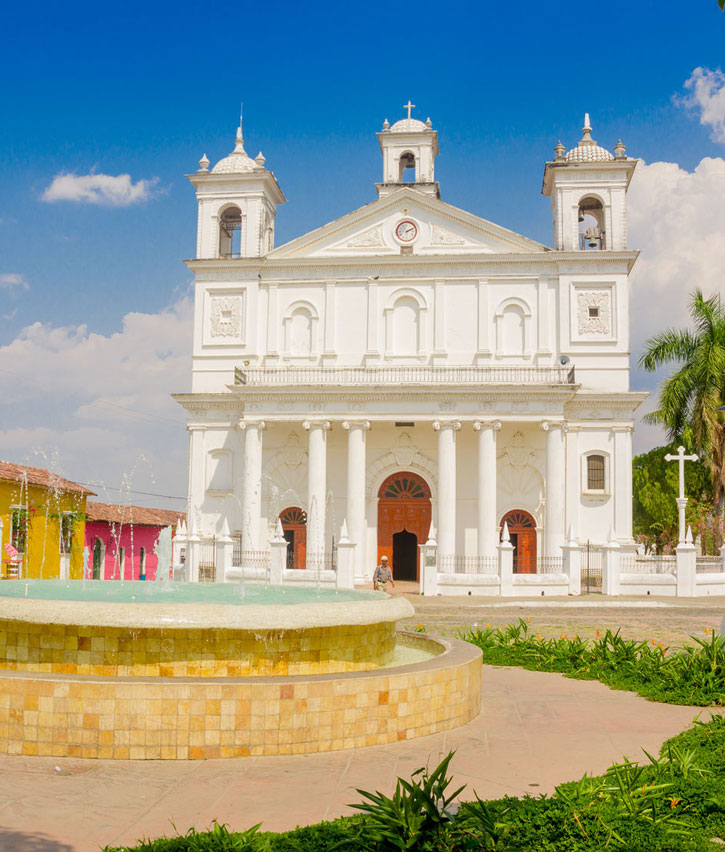
Experience the colonial charm of Suchitoto, El Salvador. Photo © Pablo Hidalgo/123rf.
San Salvador sits in a fertile valley and has a history as eruptive as the volcanoes that surround it. The churches and plazas of the Centro Histórico all have stories of protest and revolution. The museums, restaurants, and bars of Zona Rosa are perfect for an afternoon of art and culture, and day trips to the natural attractions of Parque Nacional El Boquerón or Puerta del Diablo are just a quick drive to the outskirts of the city.
Just west of San Salvador, the scenic rolling Ruta de Las Flores takes you through the Sierra Apaneca-Ilamatepec mountain range, punctuated with charming little towns including Juayúa, home of El Salvador’s most popular weekend food fair and Concepción de Ataco, the colorful cobblestone village. Parque Nacional Los Volcanes (Parque Cerro Verde) is where you can climb volcanoes, including Izalco and Santa Ana. Nearby Lago de Coatepeque is one of the largest crater lakes in the country, and the ruins of Tazumal in Chalchuapa are just a short bus ride from El Salvador’s second-largest city, Santa Ana.
The east coast also offers top-notch surfing at Playa Las Flores and Punta Mango, or sunbathing and swimming at Playa Maculis or Playa Esterón. The more adventurous can continue east to the Bajo Lempa region, where the Río Lempa meets the Pacific Ocean. Here, Bahía de Jiquilisco and Isla Montecristo offer community-based ecotourism and opportunities to release baby turtles. Finally, the rugged undeveloped islands in the Golfo de Fonseca offer remote beaches and spectacular views.
The first Spanish settlement in El Salvador, Suchitoto still shows its colonial roots, with cobblestone streets and crumbling century-old homes. The nearby ruin of Cihuatán is the largest pre-Hispanic site found in the country, and farther north the whimsical town of La Palma showcases the art of famed artist Fernando Llort. Continue up to the cloud forest of Cerro El Pital, the highest and coolest point in the country. The wild east starts in the major city of San Miguel, its nightclubs and big hotels in sharp contrast to the nearby rural towns of Perquín and El Mozote, where the Museo de la Revolución Salvadoreña and the El Mozote memorial are stark reminders that not so long ago this country was in the throes of a bloody civil war. The east also offers prehistoric cave art in the Cueva del Espíritu Santo.
Excerpted from the First Edition of Moon El Salvador.